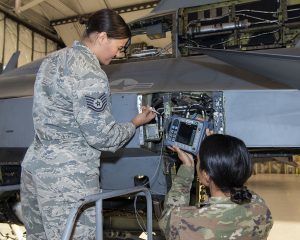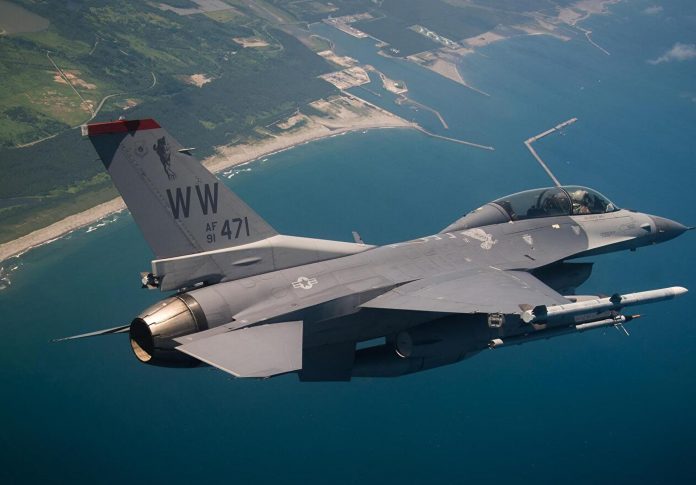The Colorado Air National Guard’s 140th Wing Aircraft Structural Maintenance and Non-Destructive Inspection section made a significant finding on the F-16C Fighting Falcon aircraft that has led to a fleet-wide investigation.
“Even the most minor cracks in an aircraft structure, ones that are not even visible to the naked eye, can cause extensive damage and possible loss of life, if not detected and corrected early on,” said Air Force Lt. Col. Jason Kneuer, 140th Aircraft Maintenance Squadron commander.
In 2016, the structural maintenance section began to notice a trend of loose or sheared fasteners on the bulkheads of F-16 aircraft where the wing attaches. The first crucial finding is credited to Air Force Staff Sgt. Rebecca Toland, a non-destructive inspection specialist with the 140th Maintenance Squadron, who performed an extensive inspection of all accessible areas of the bulkhead. Further examination by the NDI team revealed additional cracks on two separate aircraft, indicating a possible fleet-wide issue.
“What was unusual about the crack was that it was not in an area of high stress,” said Master Sgt. Tim Trollope, Air Force NDI specialist. “The unusual nature of this particular defect prompted Air Force Engineering and Lockheed Martin to visit Buckley Air Force Base, in Aurora, Colorado, for an attempt to better understand the underlying cause of the issue.”
Air Force Senior Airman Jordan Gomez, NDI specialist, said engineers “hadn’t seen cracking in this area before and were surprised that the cracking was happening in this area of the bulkhead on the aircraft. They noted that this was the least stressed spot of the bulkhead and (it) shouldn’t be happening at all.”

Additionally, three aircraft required titanium skin replacement due to fretting, which refers to the wear and possible corrosion damage at the asperities, or microscopic high points, of the contact surfaces. Unfortunately, these bulkheads aren’t manufactured any longer, which ends up causing unknown delays in repairs, according to Air Force Master Sgt. Steve Fredrick, 140th Wing aircraft maintenance structural supervisor.
“The engineers from Lockheed have deemed this particular situation, ‘Wiggle Butt’ due to the titanium skin and aluminum bulkhead butting into each other and wearing away the protective shim (a protective coating to fill gaps),” Trollope said. Samples from these bulkheads were removed and taken for further analysis by USAF and Lockheed engineers.
The findings have instituted new training standards and processes designed to enhance inspectors’ skills at recognizing and repairing these defects more efficiently.
As a result of the discovery, the metals technology shop technicians from the Colorado and Arizona Air National Guard units are working with Air Force F-16 program office engineers to build a prototype F-16 bulkhead aft flange milling tool.
Each shop is responsible for manufacturing a portion of the tool based on drawings sent by the engineers. Once the newly manufactured parts are assembled, the designed blending tool will be used to evenly blend and clean up the cracked areas of the fractured critical bulkhead flange.
“Until the discovery of the cracked bulkhead at Buckley, we thought it was more of a nuisance,” Christian Bauer, an aerospace engineer at Hill Air Force Base, Utah, said. Bauer is also working on the project.
“That all changed when the cracked bulkhead was found. We did some analysis, and it instantly became a safety-of-flight issue and began getting a lot more attention. In fact, this issue is currently one of our top priorities for the worldwide F-16 fleet,” he said.
from Defense News by DefenceTalk.com https://ift.tt/37Gxpaz
via Defense News

No comments: